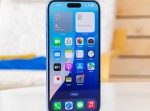Welcome back to This Week in Apps, the weekly TechCrunch series that recaps the latest in mobile OS news, mobile applications and the overall app economy.
The app industry continues to grow, with a record 218 billion downloads and $143 billion in global consumer spend in 2020. Consumers last year also spent 3.5 trillion minutes using apps on Android devices alone. And in the U.S., app usage surged ahead of the time spent watching live TV. Currently, the average American watches 3.7 hours of live TV per day, but now spends four hours per day on their mobile devices.
Apps aren’t just a way to pass idle hours — they’re also a big business. In 2019, mobile-first companies had a combined $544 billion valuation, 6.5x higher than those without a mobile focus. In 2020, investors poured $73 billion in capital into mobile companies — a figure that’s up 27% year-over-year.
This week, our series will take a dive into the key announcements impacting app developers from WWDC 21.
This Week in Apps will soon be a newsletter! Sign up here: techcrunch.com/newsletters
WWDC 21 Wrap-Up

Image Credits: Apple
Apple’s WWDC went virtual again this year, but it didn’t slow down the pace of announcements. This week, Apple introduced a slate of new developer tools and frameworks, changes to iOS that will impact how consumers use their devices and new rules for publishing on its App Store, among other things. We don’t have the bandwidth to dig into every dev update — and truly, there are better places to learn about, say, the new concurrency capabilities of Swift 5.5 or what’s new with SwiftUI.
But after a few days of processing everything new, here’s what’s jumping out as the bigger takeaways and updates.
Xcode Cloud
Apple’s development IDE, Xcode 13, now includes Xcode Cloud, a built-in continuous integration and delivery service hosted on Apple’s cloud infrastructure. Apple says the service, birthed out of its 2018 Buddybuild acquisition, will help to speed up the pace of development by combining cloud-based tools for building apps along with tools to run automated tests in parallel, deliver apps to testers via TestFlight and view tester feedback through the web-based App Store Connect dashboard. Beyond the immediate improvements to the development process (which developers are incredibly excited about based on #WWDC21 tweets) Xcode Cloud represents a big step by Apple further into the cloud services space, where Amazon (AWS), Google and Microsoft have dominated. While Xcode Cloud may not replace solutions designed for larger teams with more diverse needs, it’s poised to make app development easier — and deliver a new revenue stream to Apple. If only Apple had announced the pricing!
Swift Playgrounds 4
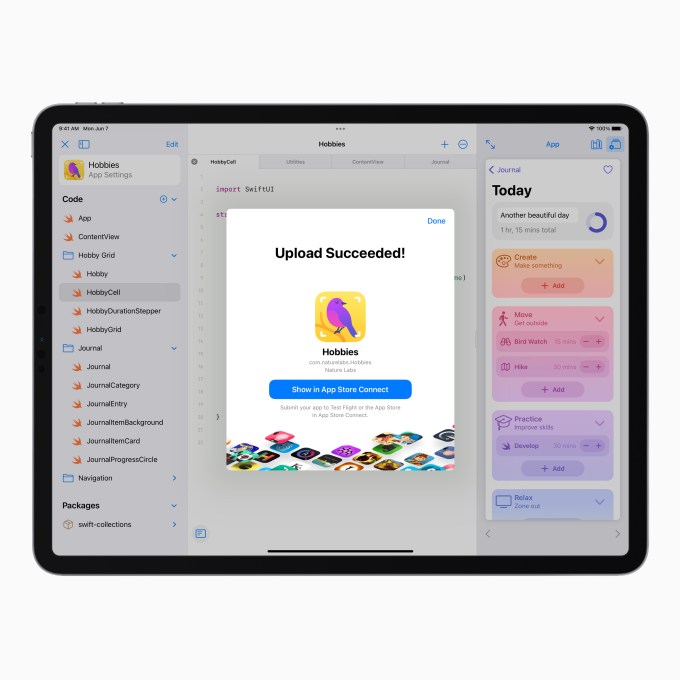
Image Credits: Apple
Swift Playgrounds got a notable update in iPadOS 15, as it will now allow developers to build iPhone and iPad apps right on their iPad and submit them to the App Store. In Swift Playgrounds 4, coming later this year, Apple says developers will be able to create the visual design of an app using SwiftUI, see the live preview of their app’s code while building and can run their apps full-screen to test them out. App projects can also be opened and edited with either Swift Playgrounds or Xcode.
While it’s not the Xcode on iPad system some developers have been requesting, it will make app building more accessible because of iPad’s lower price point compared with Mac. It could also encourage more people to try app development, as Swift Playgrounds helps student coders learn the basics then move up to more challenging lessons over time. Now, they can actually build real apps and hit the publish button, too.
App Store
Antitrust pressure swirling around Apple has contributed to a growing sentiment among some developers that Apple doesn’t do enough to help them grow their businesses — and therefore, is undeserving of a 15%-30% cut of the revenues the developers themselves worked to gain. The new App Store updates may start to chip away at that perception.
Soon, developers will be able to create up to 35 custom product pages targeted toward different users, each with their unique URL for sharing and analytics for measuring performance. The pages can include different preview videos, screenshots and text.
Image Credits: Apple
Apple will also allow developers to split traffic between three treatments of the app’s default page to measure which ones convert best, then choose the percentage of the App Store audience that will see one of the three treatments.
Meanwhile, the App Store will begin to show to customers in-app events taking place inside developers’ apps — like game competitions, fitness challenges, film premieres and more — effectively driving traffic to apps and re-engaging users. Combined, Apple is making the case that its App Store can drive discovery beyond just offering an app listing page.
Beyond the App Store product itself, Apple overhauled its App Store policies to address the growing problem of scam apps. The changes give Apple permission to crack down on scammers by removing offenders from its Developer Program. The new guidelines also allow developers to report spam directly to Apple, instead of, you know, relying on tweets and press.
Apple has historically downplayed the scam problem. It noted how the App Store stopped over $1.5 billion in fraudulent transactions in 2020, for example. Even if it’s a small percentage of the App Store, scam apps with fake ratings not only can cheat users out of millions of dollars, they reduce consumer trust in the App Store and Apple itself, which has longer-term consequences for the ecosystem health. What’s unclear, however, is why Apple is seemingly trying to solve the App Review issues using forms — to report fraud (and now, to appeal rulings, too) when it’s becoming apparent that Apple needs a more systematic way of keeping tabs on the app ecosystem beyond the initial review process.
Notifications overhaul
The App Store discovery updates mentioned above also matter more because developers may need to reduce their reliance on notifications to send users back into their apps. Indeed, iOS 15 users will be able to choose which apps they don’t need to hear from right away — these will be rounded up into a new Notification Summary that arrives on a schedule they configure, where Siri intelligence helps determine which apps get a top spot. If an app was already struggling to re-engage users through push notifications, getting relegated to the end of a summary is not going to help matters.
And users can “Send to Summary” right from the Lock Screen notification itself in addition to the existing options to “Deliver Quietly” or be turned off. That means any ill-timed push could be an app developer’s last.
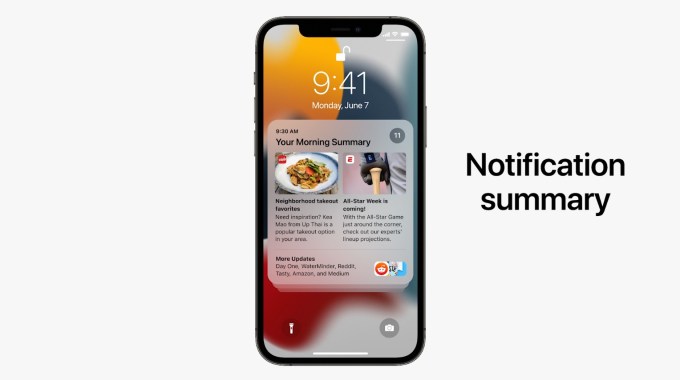
Image Credits: Apple
Meanwhile, the clever new “Focus” modes let iOS users configure different quiet modes for work, play, sleeping and more, each with their own set of rules and even their own home screens. But making this work across the app ecosystem will require developer adoption of four “interruption levels,” ranging from passive to critical. A new episode of a fav show should be a “passive” notification, for example. “Active” is the default setting — which doesn’t get to break into Focus. “Time sensitive” notifications should be reserved for alerting to more urgent matters, like a delivery that’s arrived on your doorstep or an account security update. These may be able to break through Focus, if allowed.
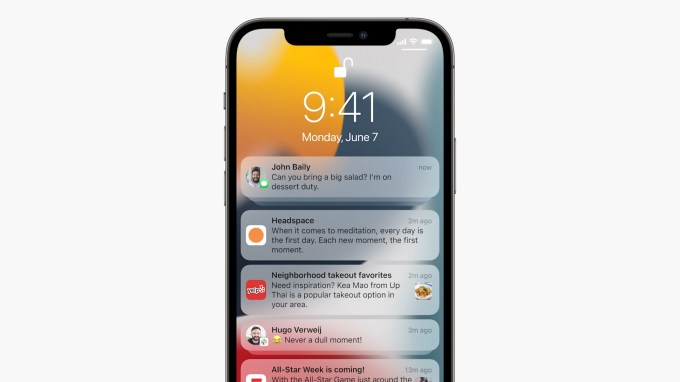
Image Credits: Apple
“Critical” notifications would be reserved for emergencies, like severe weather alerts or local safety updates. While there is a chance developers may abuse the new system to get their alert through, they risk users silencing their notifications entirely or deleting the app. Focus mode users will be power users and more technically savvy, so they’ll understand that an errant notification here was a choice and not a mistake on the developer’s part.

Image Credits: Apple
Augmented Reality
Apple has been steadily pushing out more tools for building augmented reality apps, but this WWDC it just introduced a huge update that will make it easier for developers getting started with AR. With the launch of RealityKit 2, Apple’s new Object Capture API will allow developers to create 3D models in minutes using only an iPhone or iPad (or a DSLR or drone if they choose).
Explains Apple this will address one of the most difficult parts of making great AR apps, which was the process of creating 3D models. Before, this could take hours and cost thousands of dollars — now, developers with just an iPhone and Mac can participate. The impacts of this update will be seen in the months and years ahead, as developers adopt the new tools for things like AR shopping, games and other AR experiences — including ones we may not have seen yet, but are enabled by more accessible AR technology tools and frameworks.
SharePlay
This update is unexpected and interesting, despite missing what would have been an ideal launch window: mid-pandemic back in 2020. With SharePlay, developers can bring their apps into what Apple is calling “Group Activities” — or shared experiences that take place right inside FaceTime.
If you were co-watching Hulu with friends during the pandemic, you get the idea. But Apple isn’t tacking on some co-viewing system here. Instead, it’s introducing new APIs that let users listen to music, stream video or screen share with friends, in a way that feels organic to FaceTime. There was a hint of serving the locked-down COVID-19 pandemic crowd with this update, as Apple talks about making people feel as if they’re “in the same room” — a nod to those many months where that was not possible. And that may have inspired the changes, to be sure. Similarly, FaceTime’s support for Android and scheduled calls — a clear case of Zoom envy — feels like a case of playing catch-up on Apple’s part.
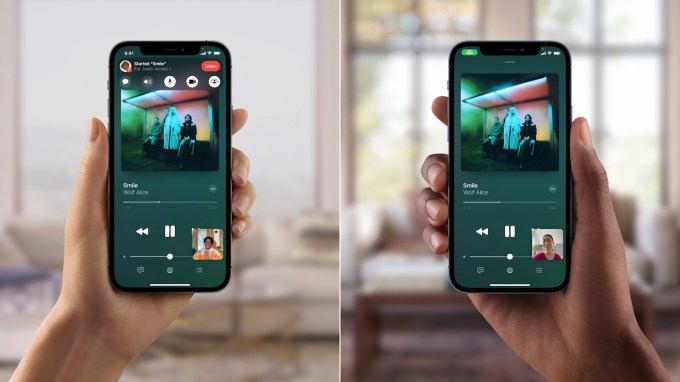
Image Credits: Apple
The immediate demand for these sorts of experiences may be dulled by a population that’s starting to recover from the pandemic — people are now going out and seeing others in person again thanks to vaccines. But the ability to use apps while FaceTime’ing has a lifespan that extends beyond the COVID era, particularly among iPhone’s youngest users. The demographic growing up with smartphones at ever-younger ages don’t place phone calls — they text and FaceTime. Some argue Gen Z even prefers the latter.

Image Credits: Apple
With its immediate support for Apple services like Apple Music and Apple TV+, SharePlay will hit the ground running — but it will only fully realize its vision with developer adoption. But such a system seems possibly only because of Apple’s tight control over its platform. It also gives a default iOS app a big advantage over third-parties.
More
There were, of course, hundreds of updates announced this week, like Spatial audio, Focus modes, AirPods updates, iPadOS improvements (widgets! multi-tasking), Health updates, iCloud+ with Private Relay, watchOS improvements, Spotlight’s upgrade, macOS 12 Monterey (with Continuity with Universal Control), HomePod updates, StoreKit 2, Screen Time APIs, ShazamKit, App Clips improvements, Photos improvements and others.
Many, however, were iterative updates — like a better version Apple Maps, for example, or Siri support for third-party devices. Others are Apple’s attempt to catch up with competitors, like the Google Lens-like “Live Text” update for taking action on things snapped in your photos. The more significant changes, however, aren’t yet here — like the plan to add Driver’s Licenses to Wallet and the plan to shift to passwordless authentication systems. These will change how we use devices for years to come.
Weekly News
Platforms: Google
 Not to be outdone by WWDC (ha), Google this week launched Android 12, beta 2. This release brings more of the new features and design changes to users that weren’t yet available in the first beta which debuted at Google I/O. This includes the new privacy dashboard; the addition of the mic and camera indicators that show when an app is using those features; an indication when an app is reading from the clipboard; and a new panel that makes it easier to switch between internet providers or Wi-Fi networks.
Not to be outdone by WWDC (ha), Google this week launched Android 12, beta 2. This release brings more of the new features and design changes to users that weren’t yet available in the first beta which debuted at Google I/O. This includes the new privacy dashboard; the addition of the mic and camera indicators that show when an app is using those features; an indication when an app is reading from the clipboard; and a new panel that makes it easier to switch between internet providers or Wi-Fi networks.
Google also this week released its next Pixel feature drop which brought new camera and photo features, privacy features, Google Assistant improvements and more. Highlights included a way to create stargazing videos, a car crash detection feature and a way to answer or reject calls hands-free.
E-commerce
Pinterest wants to get more users clicking “buy.” The company this week added a new Shopping List feature which automatically organizes your saved Product Pins for easier access.
Augmented Reality
Google discontinued its AR-based app Measure, which had allowed users to measure things in the real world using the phone’s camera. The app had seen some stability and accuracy issues in the past.
Fintech
Facebook’s Messenger app added Venmo-like QR codes for person-to-person payments inside its app in the U.S. Users can scan the codes to send or request a payment, even if they’re not Facebook friends with the other party. Payments are sent over Facebook Pay, which is backed by a users’ credit card, debit card or a PayPal account.
Downloads of fintech apps are up 132% globally YoY according to an AppsFlyer marketing report.
Twitter and Square CEO Jack Dorsey said Square is thinking about adding a bitcoin hardware wallet to its product lineup. The exec detailed some of the thinking behind the plan in a Twitter thread.
 Social: Creator Week recap
Social: Creator Week recap
Instagram head Adam Mosseri said Facebook will help creators get around Apple’s 30% cut. While any transactions that take place in iOS will follow Apple’s rules, Mosseri said Facebook will look for other ways to help creators make a living where they don’t have to give up a portion of their revenue — like by connecting brands and creators offline or affiliate deals.
Related to this, Instagram announced during its Creator Week event it will start testing a native affiliate tool that will allow creators to recommend products and then earn commissions on those sales. Creators can also now link their merch shops to personal profiles instead of just business profiles, and by year-end, will be able to partner on merch and drops with companies like Bravado/UMG, Fanjoy, Represent and Spring.
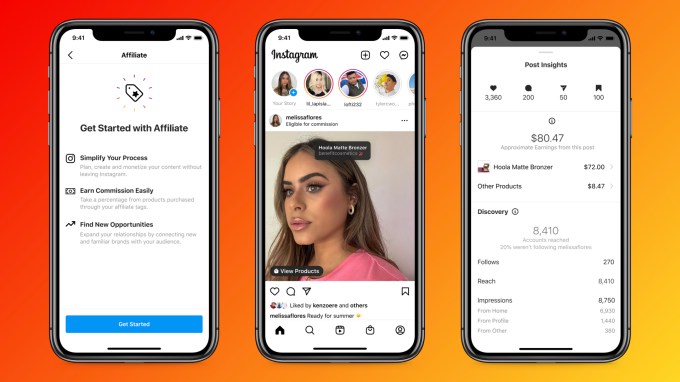
Image Credits: Instagram
Instagram also rolled out a new “badge” for live videos which lets viewers tip creators, similar to Facebook’s Stars. Facebook also said paid online events, fan subscriptions, badges and its upcoming news products will remain free through 2023. And it rolled out new features and challenges to help creators earn additional payouts for hitting certain milestones.
Finally, Instagram in a blog post explained how its algorithm works. The post details how the app decides what to show users first, why some posts get more views than others, how Explore works and other topics.
Messaging
Giphy’s Clips (GIFs with sound) are now available in the Giphy iMessage app, instead of only on the web and in its iOS app. That means you can send the…uh, videos (??)…right from your keyboard.
Dating
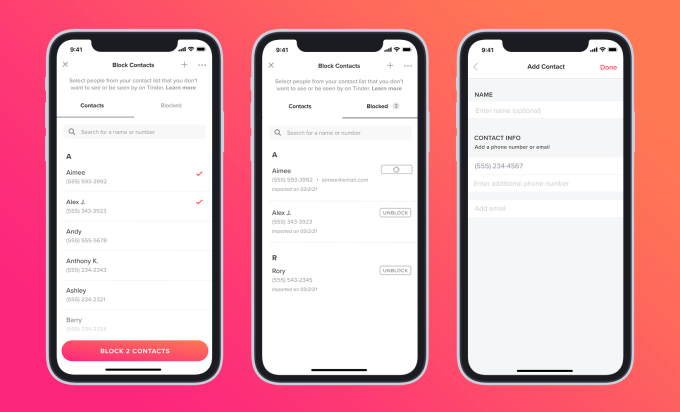
Image Credits: Tinder
Match-owned dating app Tinder added a way for users to block contacts. The feature requires users grant the app permission to access the phone’s contacts database, which is a bit privacy-invasive. But then users can go through their contacts and check those they want to block on Tinder. The benefit is this would allow people to block exes and abusers. But on the downside, it permits cheating as users can block partners and those who might see them and report back.
Streaming & Entertainment
YouTube will allow creators to repurpose audio from existing YouTube videos as its “Shorts” product — basically, its TikTok competitor — rolls out to more global markets.
Gaming
Google’s cross-platform cloud gaming service Google Stadia is coming to Chromecast with Google TV and Android TV starting on June 23.
Roblox is generating estimated revenue of $3.01 million daily on iPhone, according to data from Finbold. Clash of Clans, Candy Crush Saga, Pokémon GO and others follow. Good thing if they have to pay up over that music usage lawsuit.
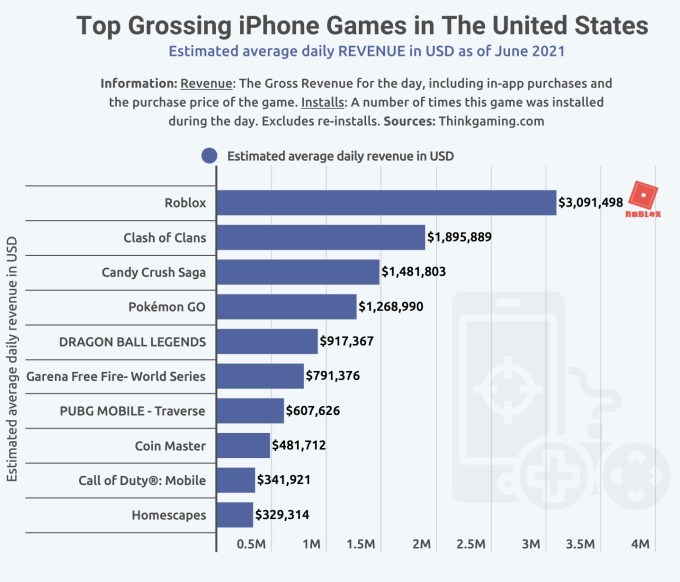
Image Credits: Finbold
Utilities
Apple-owned weather app Dark Sky, whose technology just powered a big iOS 15 revamp of Apple’s stock weather app, is not shutting down just yet. The company announced its iOS app, web app and API will remain online through the end of 2022, instead of 2021 as planned.
Productivity
Microsoft’s Outlook email app for iOS now lets you use your voice to write emails and schedule meetings. The feature leverages Cortana, and follows the launch of a Play My Emails feature inside Outlook Mobile.
Government & Policy
President Biden revoked and replaced Trump’s actions which had targeted Chinese apps, like TikTok and WeChat. The president signed a new executive order that requires the Commerce Dept. to review apps with ties to “foreign adversaries” that may pose national security risks. Trump had previously tried to ban the apps outright, but his order was blocked by federal courts.
Google has agreed to show more mobile search apps for users to choose from on new Android phones following feedback from the European Commission. The company had been showing a choice screen where app providers bid against each other for the slot, and pay only if users download apps. DuckDuckGo and others complained the solution has not been working.
Security & Privacy
Security flaws were found in Samsung’s stock mobile apps impacting some Galaxy devices. One could have allowed for data theft through the Secure Folder app. Samsung Knox security software could have been used to install malicious apps. And a bug in Samsung Dex could have scraped data from notifications. There are no indications users were impacted and the flaws were fixed.
An App Store analysis published by The Washington Post claims nearly 2% of the top grossing apps on one day were scam apps, which cost people $48 million. They included several VPN apps that told users their iPhones were infected with viruses, a QR code reader that tricked customers into a subscription for functionality that comes with an iPhone, and apps that pretend to be from big-name brands, like Amazon and Samsung.
Multiple apps were removed from the Chinese app store for violating data collection rules, Reuters reported. The apps hailed from Sogou, iFlytek and others, and included virtual keyboards.
Funding and M&A
 Mexican payments app Clip raised $250 million from SoftBank’s Latin American Fund and Viking Global Investors, valuing the business at $2 billion. The app offers a Square-like credit card reader device and others, and has begun to offer cash advances to clients.
Mexican payments app Clip raised $250 million from SoftBank’s Latin American Fund and Viking Global Investors, valuing the business at $2 billion. The app offers a Square-like credit card reader device and others, and has begun to offer cash advances to clients.
 Shopify acqui-hires the team from the augmented reality home design app Primer. The app, which will be shut down, had allowed users to visualize what tile, wallpaper or paint will look like on surfaces inside their home.
Shopify acqui-hires the team from the augmented reality home design app Primer. The app, which will be shut down, had allowed users to visualize what tile, wallpaper or paint will look like on surfaces inside their home.
 Singapore-based corporate services “super app” Osome raised $16 million in Series A funding. The app offers online accounting and other business services for SMBs. Investors include Target Global, AltaIR Capital, Phystech Ventures, S16VC and VC Peng T. Ong.
Singapore-based corporate services “super app” Osome raised $16 million in Series A funding. The app offers online accounting and other business services for SMBs. Investors include Target Global, AltaIR Capital, Phystech Ventures, S16VC and VC Peng T. Ong.
 Chinese grocery delivery app Dingdong Maicai, backed by Sequoia and Tiger Global, has filed for a U.S. IPO. To date, the company has raised $1 billion.
Chinese grocery delivery app Dingdong Maicai, backed by Sequoia and Tiger Global, has filed for a U.S. IPO. To date, the company has raised $1 billion.
 San Francisco-based MaintainX raised $39 million in Series B funding led by Bessemer Venture Partners for its mobile-first platform for industrial and frontline workers to help track maintenance, safety and operations.
San Francisco-based MaintainX raised $39 million in Series B funding led by Bessemer Venture Partners for its mobile-first platform for industrial and frontline workers to help track maintenance, safety and operations.
 Berlin’s Ada Health raised $90 million in Series B funding in a round led by Leaps by Bayer, the impact investment arm of Bayer AG. The app lets users monitor their symptoms and track their health and clinical data.
Berlin’s Ada Health raised $90 million in Series B funding in a round led by Leaps by Bayer, the impact investment arm of Bayer AG. The app lets users monitor their symptoms and track their health and clinical data.
 Photo app Dispo confirmed its previously leaked Series A funding, which earlier reports had pegged as being around $20 million. The app had been rebranded from David’s Disposable and dropped its association with YouTuber David Dobrik, following sexual assault allegations regarding a member of the Vlog Squad. Spark Capital severed ties with Dispo as a result. Seven Seven Six and Unshackled Ventures remained listed as investors, per Dispo’s press release, but the company didn’t confirm the size of the round.
Photo app Dispo confirmed its previously leaked Series A funding, which earlier reports had pegged as being around $20 million. The app had been rebranded from David’s Disposable and dropped its association with YouTuber David Dobrik, following sexual assault allegations regarding a member of the Vlog Squad. Spark Capital severed ties with Dispo as a result. Seven Seven Six and Unshackled Ventures remained listed as investors, per Dispo’s press release, but the company didn’t confirm the size of the round.
 Brazilian fintech Nubank raised a $750 million extension to its Series G (which was $400 million last year) led by Berkshire Hathaway. The company offers a digital bank account accessible from an app, debit card, payments, loans, insurance and more. The funding brings the company to a $1.15 billion valuation.
Brazilian fintech Nubank raised a $750 million extension to its Series G (which was $400 million last year) led by Berkshire Hathaway. The company offers a digital bank account accessible from an app, debit card, payments, loans, insurance and more. The funding brings the company to a $1.15 billion valuation.
 Seattle-based tutoring app Kadama raised $1.7 million in seed funding led by Grishin Robotics. The app, which offering an online tutoring marketplace aimed at Gen Z, rode the remote learning wave to No. 2 in the Education category on the App Store.
Seattle-based tutoring app Kadama raised $1.7 million in seed funding led by Grishin Robotics. The app, which offering an online tutoring marketplace aimed at Gen Z, rode the remote learning wave to No. 2 in the Education category on the App Store.
 Mark Cuban-based banking app Dave, which helps Americans build financial stability, is planning to go public via a SPAC launched by Chicago-based Victory Park Capital called VPC Impact Acquisition Holdings III. It also includes a $210 million private investment from Tiger Global Management.
Mark Cuban-based banking app Dave, which helps Americans build financial stability, is planning to go public via a SPAC launched by Chicago-based Victory Park Capital called VPC Impact Acquisition Holdings III. It also includes a $210 million private investment from Tiger Global Management.
 Mobile game publisher Voodoo acquired Tel Aviv-based marketing automation platform Bidshake for an undisclosed sum. Launched in January 2020, Bidshake combines data aggregation and analytics with campaign and creative management. It will continue to operate independently.
Mobile game publisher Voodoo acquired Tel Aviv-based marketing automation platform Bidshake for an undisclosed sum. Launched in January 2020, Bidshake combines data aggregation and analytics with campaign and creative management. It will continue to operate independently.
Downloads
Turntable — tt.fm
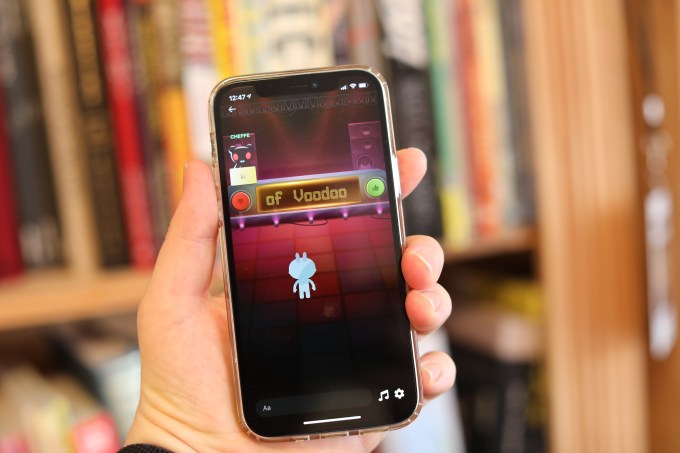
Image Credits: tt.fm on iPhone/Brian Heater
Newly launched music social network tt.fm is a Turntable.fm rival that lets you virtually hang out with friends while listening to music. To be clear, the app is not the same as Turntable.fm, which shut down in 2013 but then returned during the pandemic as people looked to connect online. While that Turntable was rebirthed by its founder Billy Chasen, Turntable – tt.fm hails from early Turntable.fm employee, now tt.fm CEO Joseph Perla. But as live events are coming back, the question now may be not which Turntable app to choose, but whether the Turnable.fm experience has missed the correct launch window…again.
SketchAR
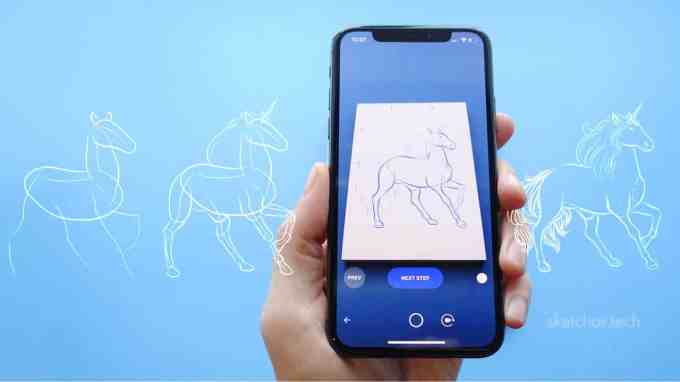
SketchAR
The art app SketchAR previously offered artists tools to draw with AR, turn photos into AR, create AR masks for Snapchat, play games and more. With its latest update, artists can now turn their work into NFTs directly inside the app and sell it. The app, now used by nearly 500,000 users, will select a “Creator of the Week” to NFT on OpenSea. Others can create and auction their art as NFTs on-demand.
Tweets
Powered by WPeMatico


 Designed to be as close to pixel-perfect as possible.
Designed to be as close to pixel-perfect as possible. Fully functional, perhaps even usable as a second OS.
Fully functional, perhaps even usable as a second OS. Fully open source for all to learn, modify, and build on.
Fully open source for all to learn, modify, and build on. 

